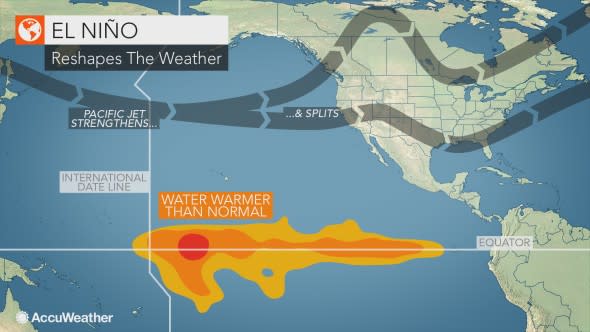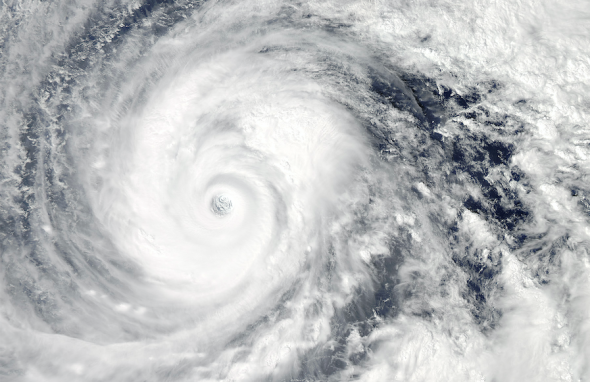Is there a relation between fewer Atlantic hurricanes and more Pacific typhoons?
Late summer and early autumn are the most active times for tropical cyclones across much of the world, but do more tropical systems in the Pacific Ocean lead to fewer hurricanes in the Atlantic Ocean?
Tropical cyclones are referred to using different names depending on where they are in the world. Tropical cyclones in the Atlantic Ocean, Central Pacific Ocean or eastern Pacific Ocean are called hurricanes, while those in the western Pacific Ocean are called typhoons.
Although they occur in different parts of the world, the number of hurricanes in the Atlantic Ocean and the number of typhoons in the western Pacific Ocean can be related.
"The weather pattern that leads to an active season in one basin generally is less favorable for the other basin," AccuWeather Senior Meteorologist Jason Nicholls said.
Two of the large-scale weather factors that can influence the number of tropical systems across the globe are El Niño and La Niña.

El Nino, the opposite of La Niña, occurs when the sea surface temperatures in the tropical Pacific Ocean are above normal for an extended period of time. The change in ocean temperature can influence the global weather pattern, including the formation of tropical cyclones.
"During an El Niño year or a developing El Niño year, the water temperature out in the Pacific raises slightly, and the area of the warm water expands," said AccuWeather Senior Meteorologist Jason Nicholls.
This results in a larger breeding ground for tropical systems in the central and eastern Pacific Ocean, helping to increase the total number of tropical cyclones in a given year.
Despite the warmer-than-normal waters not extending across the entire ocean, it can influence the number of typhoons that spin up in the western Pacific basin.
In a study analyzing typhoon activity over several decades, researchers Richard Li and Wen Zhou from the Guy Carpenter Asia-Pacific Climate Impact Centre at the City University of Hong Kong, found that the number of typhoons increases during the transitional year from La Nina to El Niño.

Super Typhoon Vongfong over the western Pacific Ocean on October 7, 2014. (Image/NASA/Jeff Schmaltz, LANCE MODIS Rapid Response Team at NASA GSFC)
While tropical systems are more frequent across the Pacific Ocean during a developing El Niño, the opposite can be said for the Atlantic Hurricane Basin.
"El Niño tropical cyclone seasons tend to be weak in the Atlantic Basin," AccuWeather Senior Meteorologist Jim Andrews said.
One of the main factors is the increase in wind sheer, or disruptive winds that can inhibit tropical development, over much of the Atlantic Ocean during El Niño.
Additionally, the increase in hurricane activity in the Pacific can also influence Atlantic Basin systems.
"The upward motion in the eastern and maybe central Pacific [associated with tropical systems] is compensated by a lack of upward motion farther east [over the Atlantic Ocean]," Andrews said.
Although a higher number of typhoons can correlate with a lower number of Atlantic hurricanes, people living along the coast of the United States should still prepare for potential impacts from a tropical system.
"This season may not [bring] as many impacts [as last season], but I'm almost afraid to tell people this because it only takes one big storm to hit you to cause massive damage," AccuWeather Atlantic Hurricane Expert Dan Kottlowski said.
"Anywhere else along the coast, everybody should still be vigilant and prepare for a possible direct impact," Kottlowski said.
